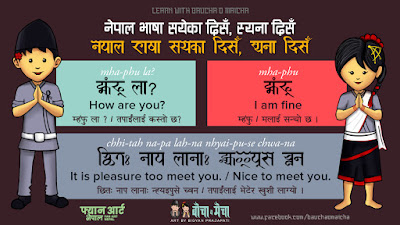Creative ways to preserve, promote and revitalize indigenous languages and script
Creative ways to preserve, promote and revitalize indigenous languages and script
Preserving, promoting, and revitalizing indigenous languages is crucial for cultural diversity and heritage. Here are some creative ideas to achieve these goals:
Digital Language Archives: Create online platforms where indigenous communities can upload recordings, texts, and other resources related to their languages. This can help preserve and share linguistic knowledge globally.
Language Learning Apps: Develop interactive mobile apps that teach indigenous languages through games, stories, and interactive lessons, making learning more engaging and accessible to younger generations.
Virtual Reality Language Immersion: Use virtual reality to create immersive experiences where learners can interact with virtual environments while hearing and using the indigenous language. This can help learners feel more connected to the language and culture.
Language Through Art: Collaborate with indigenous artists to create visual art, music, and performances that incorporate the language. This can make the language more appealing to younger generations and the general public.
Cultural Exchange Programs: Organize exchange programs where members of indigenous communities visit other communities to learn and share language, stories, and traditions. This can create cross-cultural connections and inspire language revitalization efforts.
Storytelling Workshops: Host workshops where elders and language speakers share traditional stories, legends, and anecdotes in the indigenous language. Record these sessions for future reference.
Indigenous Language Podcasts: Create podcasts that discuss various aspects of indigenous culture and history in the language. This can attract a wider audience and encourage language use in everyday conversations.
Collaborative Translation Projects: Partner with universities, researchers, and community members to translate important documents, literature, and historical records into the indigenous language.
Language Celebration Events: Organize annual or bi-annual language celebration events that include language workshops, cultural performances, and exhibitions. These events can bring people together and create a sense of pride in the language.
Intergenerational Learning Circles: Establish regular gatherings where elders teach language to younger members of the community through casual conversations, games, and activities.
Language in Media: Incorporate the indigenous language into mainstream media, such as films, TV shows, and advertisements. This exposure can increase the visibility of the language and encourage its use.
Language Challenges and Contests: Host language challenges or contests that encourage people to use the language creatively. This could involve writing poems, creating songs, or even inventing new words in the language.
Language Revival Grants: Establish grants to support community-led language revitalization projects, providing funding for initiatives such as language classes, resource creation, and cultural events.
Collaborative Online Platforms: Create online spaces where speakers of the indigenous language can connect with each other, share resources, and engage in language-related discussions.
Language Nests for Children: Establish language immersion programs for young children, where they are exposed to the language through play, songs, and activities in a nurturing environment.
Remember that the success of these initiatives depends on collaboration with indigenous communities, respect for their traditions, and a long-term commitment to language revitalization.

Comments
Post a Comment